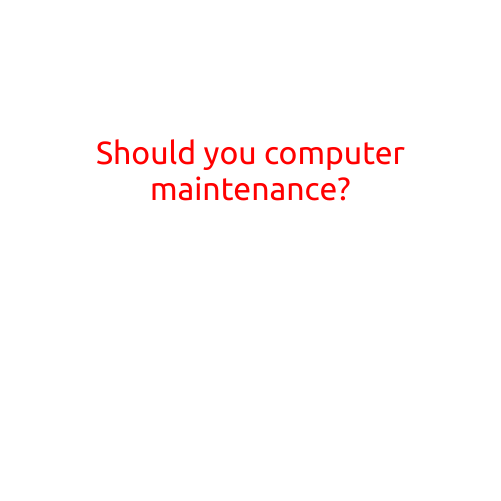
When to Computer Troubleshooting?
Are you experiencing issues with your computer that are driving you crazy? Are errors popping up, programs freezing, or your computer simply refusing to function as it should? If so, it’s time to bring out the big guns – computer troubleshooting!
But when exactly should you troubleshoot your computer? Here are some telling signs that indicate it’s time to dust off your problem-solving skills:
1. Errors and Crashes
If your computer is throwing error messages or crashing frequently, it’s a sign that something is amiss. These errors can be caused by a variety of factors, including software conflicts, hardware issues, or malware infections. Troubleshooting can help you identify the root cause and fix the problem.
2. Slow Performance
If your computer is taking forever to start up, launch programs, or perform tasks, it may be a sign of a problem. Slow performance can be attributed to a range of issues, including inadequate storage space, outdated software, or malware. A troubleshooter can help you optimize your system for better performance.
3. Unusual Behavior
If your computer is exhibiting unusual behavior, such as keyboard and mouse malfunctions, weird sounds, or strange visuals, it’s likely a sign of a hardware or software problem. Troubleshooting can help you identify the cause and repair or replace the affected component.
4. New Hardware or Software Installation Issues
When you install new hardware or software, it’s essential to ensure that everything is working as expected. If you encounter issues during or after the installation process, it’s likely that there’s a problem with the installation or configuration. Troubleshooting can help you resolve the issue and get your new addition up and running smoothly.
5. User Error
If you’re experiencing issues that are clearly user-related, such as deleted files or accidentally changed settings, troubleshooting can still be useful. A troubleshooter can help you recover lost files, restore settings, and establish good habits to prevent similar mistakes in the future.
6. Performance Drops Over Time
Computers, like cars, require regular maintenance to ensure optimal performance. If you notice a drop in performance over time, it may be a sign that your computer needs some TLC. Troubleshooting can help you identify and address the issue before it becomes a major problem.
7. Hardware or Software Updates Fail
When you attempt to update your hardware or software, but the process fails, it’s a sign that something is amiss. Troubleshooting can help you identify the cause of the failure and resolve the issue.
When to Call in the Experts
While DIY troubleshooting can be empowering, there are times when it’s best to seek professional help. If you’re not comfortable troubleshooting or if your computer issues are complex, you may want to consider consulting a professional IT expert or contacting the manufacturer’s support team.
Conclusion
Computer troubleshooting is an essential skill for anyone who uses a computer regularly. By recognizing the signs that indicate the need for troubleshooting, you can take proactive steps to resolve issues before they get out of hand. Whether you’re dealing with error messages, slow performance, or unusual behavior, troubleshooting can help you get your computer up and running smoothly. So, don’t wait until your computer crashes – troubleshoot early and often to prevent problems from developing in the first place!





